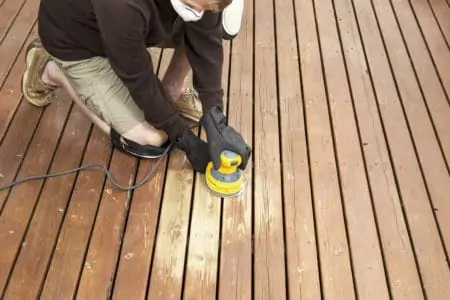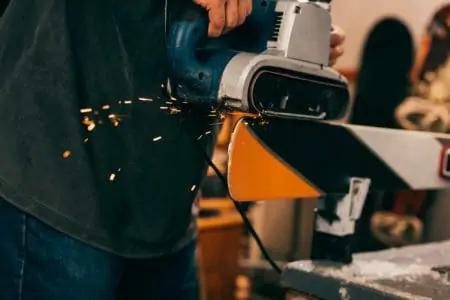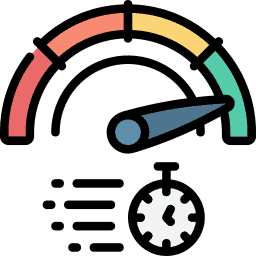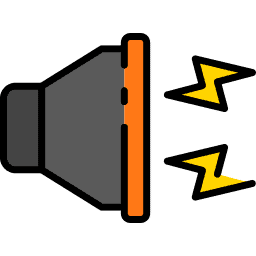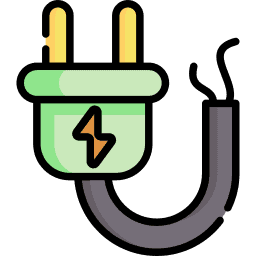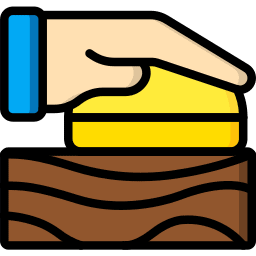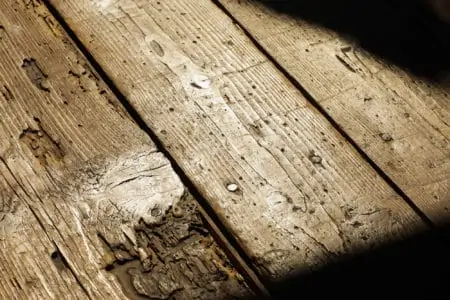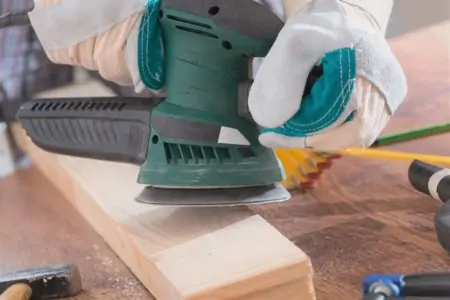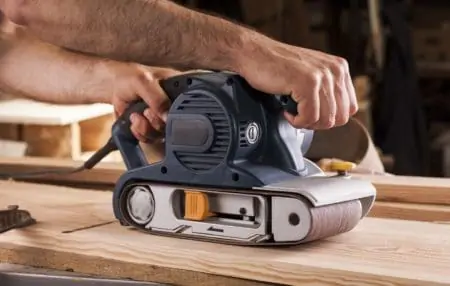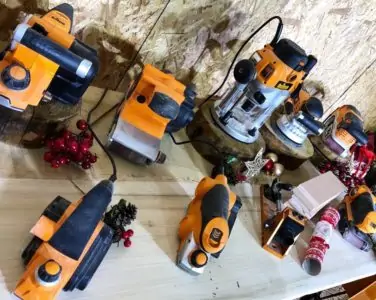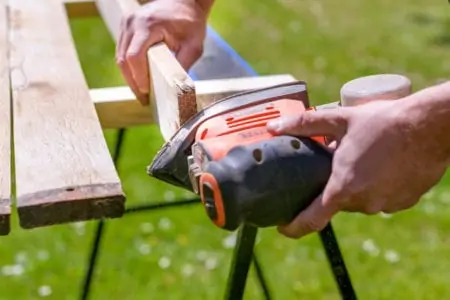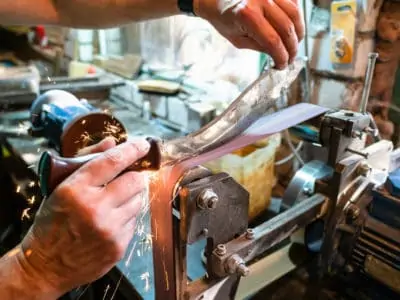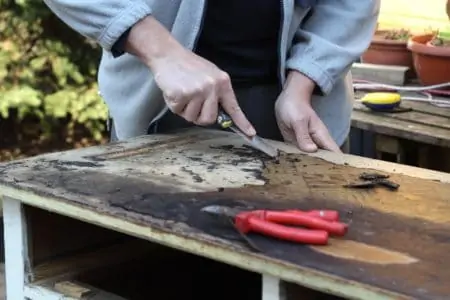Your new deck looks great when first laid, but it is under constant attack from weathering, mold, and mildew over winter. Grime builds up, making the surface slippery and discolored.
The best way to revive your deck is to refinish it, and for that, you will need the right tools. We check out the 7 best sanders for decks to make your life easier.
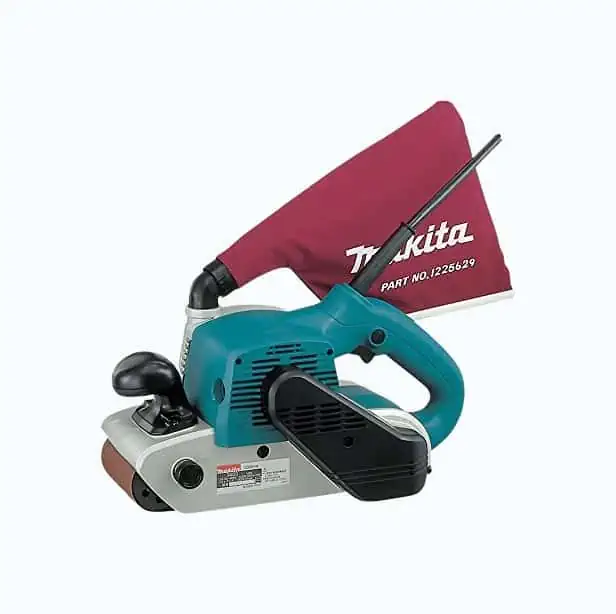
- 84 db operation
- 11-Amp motor
- Large dust collection bag
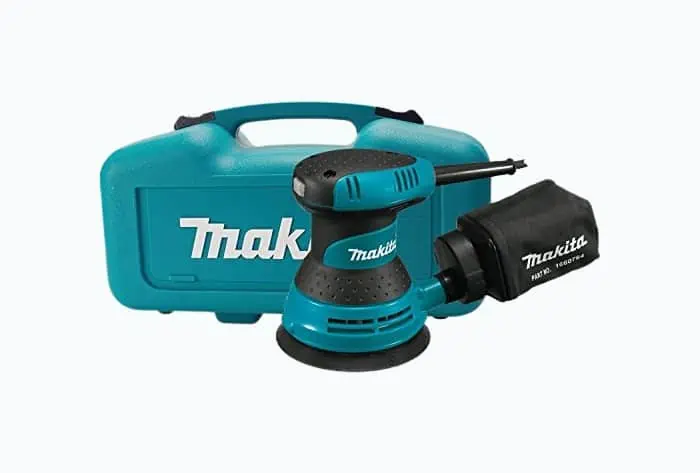
- 3-Amp motor
- 12,000 OPM
- Ergonomic low vibration grip
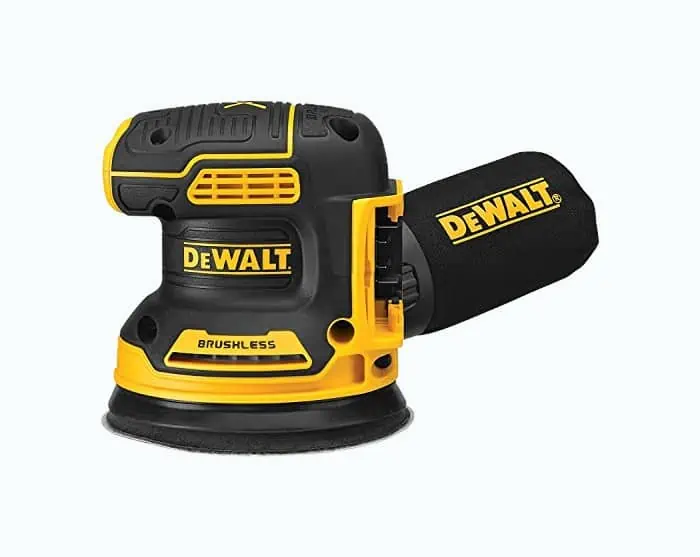
- 20V cordless operation
- Variable speed control
- One-handed locking dust bag
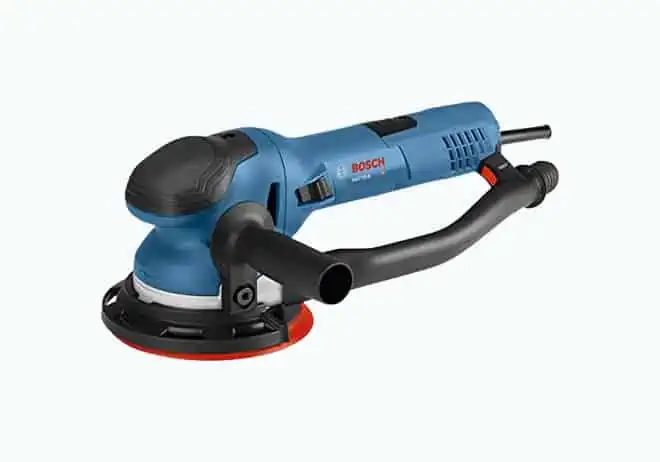
- 7,300 OPM rotating disc
- 2-in-1 tool
- Multiple grip positions
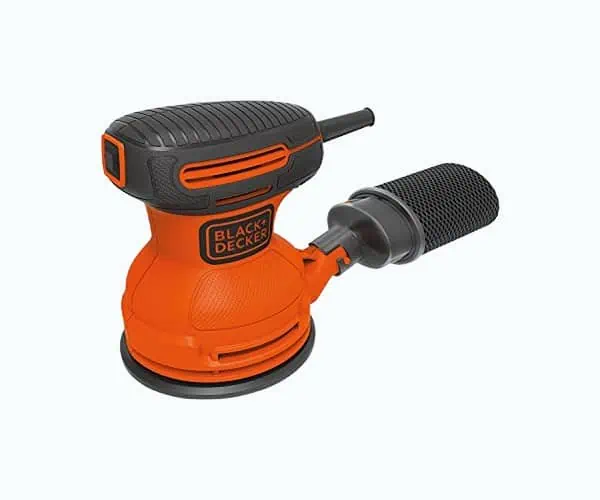
- Comfortable ergonomic handle
- Compact and versatile
- On-board dust bag
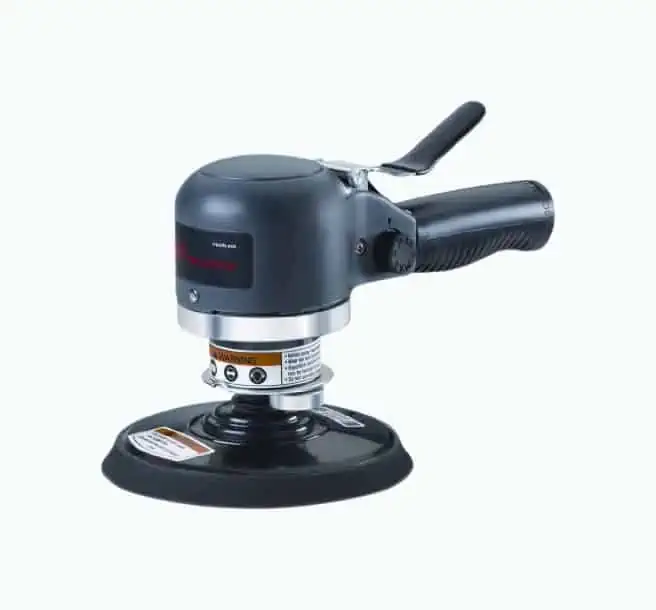
- Has a built-in silencer
- Balanced construction
- Speed control regulator
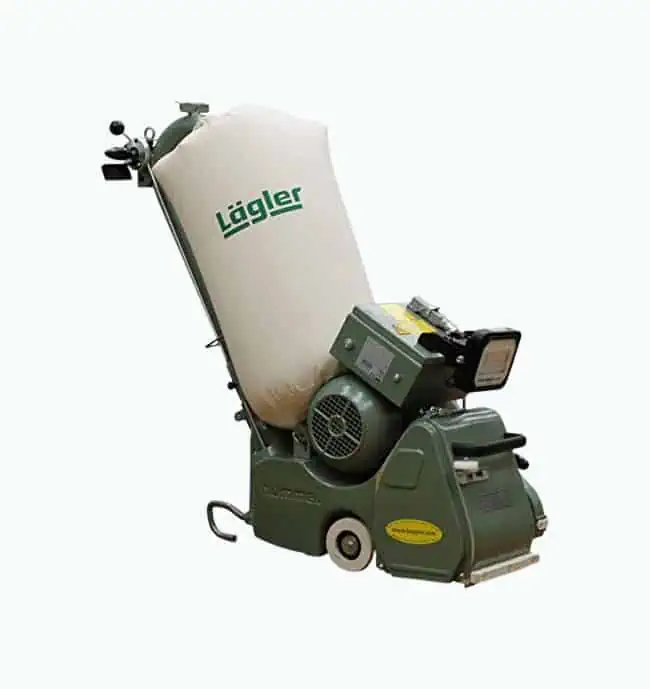
- 8-inch sanding belt
- 3-stage pressure regulation
- 30-year lifespan
Review Methodology: At Sensible Digs, we take pride in our hands-on approach and professional evaluation process when reviewing the best sanders for decks. Our team uses a strict set of criteria to assess each product, delving into performance data and comparing the different models side by side. We examine key decision-making factors such as power, design, user-friendliness, and durability. Our analysis is based on first-hand experiences and solid facts, ensuring you receive a thorough, unbiased review. Our aim is to help you find a product that not only stands out from its competitors but also meets your specific needs. The score given to each sander reflects our in-depth research and the results of our rigorous tests. Trust Sensible Digs to guide you in making an informed choice.
The Best Sanders for Decks of 2024
Here are our favorite sanders suitable for sanding decks.
Makita 9403 Belt Sander
Best Belt Sander for Decks
This Makita is a tough act to follow. Not only is it our pick for the best belt sander, but it also wins in the quietest stakes. It only generates 84 decibels, which is pretty good for a deck sander. The sanding belt measures 4 x 24 inches and runs at a speed of 1,640 feet per minute (FPM).
It has an innovative design that allows you to get close to the action at edges and corners, plus, it benefits from Labyrinth construction, which seals and protects the motor bearings from debris.
It is one of the best tools to use on large decks, with the 11-amp motor making light work of the surface and the large dust collection bag storing all the debris safely until it needs emptying.
What We Like
84 dB Operation
Sanders are noisy, that’s a fact, but this model operates at 84 decibels, which is a low volume for a sander. If you have close neighbors, this has to be a consideration.
11-Amp Motor
The powerful 11-amp motor generates an impressive 1,640 feet per minute for more effective removal of the surface material. If you have a larger surface area, this tool makes light work of the task.
Trusted Brand
Makita is famed across the globe as a maker of quality power tools, and this model is no exception. It is robust and constructed of the highest quality materials.
What We Don't Like
Very Expensive
It’s a Makita alright, and it isn’t cheap. If you want this tool, you’d better save your pennies or hope that it is on special offer. Failing that, dig deep to get it.
Product Specs
| Weight (pounds) | 13 |
| Dimensions (inches) | 9 x 16.1 x 9.76 |
| Amps/volts | 11 amps |
| Speed (FPM/OPM) | 1,640 FPM |
| Grit | 80 |
| Price | $$$$$ |
| Warranty | 1-year |
Our Ratings
User Experience
Makita BO5030K Random Orbital Sander
Best Random Orbital Sander for Decks
This is the second Makita sander to make the list. This model is a random orbital sander, meaning it rotates and moves side to side in a motion known as oscillation.
The 3-amp motor generates 12,000 orbits per minute (OPM), which is more than enough to remove material from the surface of your deck. It has a rubberized grip for control and grip, as well as reducing hand fatigue.
This model has oversized ball bearings for longevity and increased robustness. The sanding pads swap in super-quick time to keep you working and reduce downtime. You also get 8 dust extraction ports in the base of the disc to suck away dangerous debris.
What We Like
Random Motion
The sanding pad’s random action is more efficient than an orbital sander in that it removes more material with every surface contact. It also makes fewer marks, leaving your deck super-smooth.
12,000 Orbits Per Minute
The 3-amp motor produces 12,000 OPM. This is more than sufficient to strip a small to medium size deck with ease. It also makes a less visible impact on the wooden surface.
Ergonomic Grip
The rubberized palm grip presents a low vibration action. Reducing the vibration decreases hand and wrist fatigue to ensure longer operation time, and lowers the volume.
What We Don't Like
Smaller Decks Only
Unlike the belt sander, you might find this random orbital sander better suited to small to medium decks rather than substantial areas. You can sand significant decks but be prepared for the job to take longer.
Product Specs
| Weight (pounds) | 2.87 |
| Dimensions (inches) | 15 x 7 x 10 |
| Amps/volts | 3 amps |
| Speed (FPM/OPM) | 12,000 OPM |
| Grit | Not stated |
| Price | $$$ |
| Warranty | 1-year |
Our Ratings
Personal Perspective
DeWALT 20V MAX Orbital Sander
Best Cordless Sander for Decks
We had to include a DeWALT in the review. This cordless model is 20 volts maximum, has a textured rubber overmold grip and adjustable speed control for greater versatility. The speeds range from 8,000 to 12,000 OPM.
This model has the latest in brushed motor technology, which increases your runtime, extending the life of the lithium-ion battery (sold separately). It also has a one-handed locking dust bag, but you do get the option of attaching a vacuum hose to extract the dust to a central canister.
The main advantage of this tool is its go-anywhere ability. It is the perfect tool for outdoor jobs like deck sanding.
The major downside with this DeWALT is the batteries and charger cost extra. Remember to factor that in when making a purchase. The batteries will increase the cost-base considerably.
What We Like
Cordless Operation
Why suffer the hassle of plugging in an extension cord and trailing it across the lawn to reach your deck. A battery-operated sander is the best option for speed and convenience.
Variable Speed Control
The speed adjusts from 8,000 OPM to 12,000 OPM, giving you the ability to go crazy speed when it counts and moderate rates for detailed areas, which requires greater control.
Brushless Motor
Brushless motors are the latest in advanced motor technology. They are more efficient, preserving the life of the tool while at the same time increasing the capacity of the battery, extending the runtime.
What We Don't Like
Separate Battery and Charger
This cordless sander is sold as the bare tool only. If you want this model, you will need to allocate extra cash for the charger and battery. That makes this even more costly compared to the competition.
Product Specs
| Weight (pounds) | 2.56 |
| Dimensions (inches) | 8.8 x 5.7 x 6.3 |
| Amps/volts | 20 volts |
| Speed (FPM/OPM) | 8,000 to 12,000 OPM |
| Grit | 60 to 80 |
| Price | $$$$ |
| Warranty | 3-year |
Our Ratings
Community Feedback
Bosch Power Tools GET75-6N Orbital Sander
Best Orbital Sander for Decks
Global brands dominate this list, and this Bosch sander sticks to that theme. This is a unique sander because not only does it orbit, you get a second setting that allows you to switch it to a random motion.
For this reason, the speed is measured in RPM and OPM. The oscillation speed maxes out at 640 RPM, and the rotating disc reaches 7,300 OPM. And that’s not all because you get variable speed control with the lowest RPM setting at 290 and the slowest OPM coming in at 3,300.
Like DeWALT and Makita, Bosch has an enviable position in the world of power tools, so it is no surprise that we had to feature one of their sanders on the list.
What We Like
Adjustable Speed
You can change the RPM from 290 to 640, while at the same time, the OPM ranges from 3,300 to 7,300. It gives you the ultimate control when working on different materials and sections of your deck.
2-in-1 Tool
Switching from random motion to orbital action means you can adjust the sander to cater to speed, accuracy, and maximum material removal.
Multiple Grip Positions
This model has an auxiliary side handle for better grip and control, as well as a rubberized overmold grip for less hand and wrist fatigue.
What We Don't Like
Super Expensive
This model is almost 3 times as much as the DeWALT cordless model. Bosch products are good, but do they justify this price tag? Only you can decide that.
Product Specs
| Weight (pounds) | 5.7 |
| Dimensions (inches) | 15 x 6.3 x 5.5 |
| Amps/volts | 7.5 amps |
| Speed (FPM/OPM) | 290 to 640 RPM and 3,300 to 7,300 OPM |
| Grit | 270 |
| Price | $$$$$ |
| Warranty | 1-year limited |
Our Ratings
First-Hand Impression
Black+Decker Random Orbit Sander
Best Budget Sander for Decks
For those looking for budget-friendly but high-quality tools, then Black + Decker is always there. This powerful random orbit sander will spruce up your deck without breaking the bank.
It features a 2-amp motor for 12,000 OPM. For the low price, this is pretty incredible. You can enjoy a quick, frustration-free sand and a beautiful deck.
What We Like
Comfortable Ergonomic Handle
The handle on power tools is one of the most important features. At first glance, it may seem unimportant, but if you neglect to consider the handle shape and material, you may regret it. This has a comfort grip handle, so it’s easy and natural to hold. It will also reduce fatigue while you work.
Compact and Versatile
The small compact design of this machine is a big bonus. Not only is it lightweight, easy to store, and simple to transport. But it also ensures that it’s small enough to sneak into hard-to-reach places and tight corners for a more thorough finish.
On-Board Dust Bag
This tool features a handy dust collection bag attached to the machine. So instead of the dust flying around and piling up, it goes directly to the onboard bag. This can be easily emptied whenever you need.
What We Don't Like
Small Head, May Take Longer
For decks, you may find this frustrating purely because the sander is on the small side. The five-inch disc makes this an incredible sander for small jobs such as narrow wood and kitchen cabinets, but you may find it takes a while to sand down an entire deck.
Not Durable
One big sacrifice you make for the small price is that this isn’t a very durable sander. Some customers found that the motor was completely dead after a few months of routine use.
Product Specs
| Weight (pounds) | 3.16 |
| Dimensions (inches) | 7 x 5 x 6 |
| Amps/volts | 2 amps |
| Speed (FPM/OPM) | 12,000 OPM |
| Grit | Not specified |
| Price | $ |
| Warranty | 2-year limited |
Our Ratings
User Experience
Ingersoll Rand 311A 6-Inch Heavy-Duty Air Sander
Best Pneumatic Sander for Decks
Pneumatic sanders are more powerful, and they generally have larger sanding pads for faster material removal. If you have a substantial deck, a pneumatic sander might be the best choice. We measure the effectiveness of air tools in CFM and pressure.
This Ingersoll Rand has a rating of 17 cubic feet per minute (CFM), which denotes the strength of the airflow. It also generates 12,000 RPM. If you want a low vibration model, this is the one.
It also has a lever throttle to reduce the pressure on your hands and wrists for less fatigue. The built-in silencer dampens the sander’s noise, and the swirl-free finish ensures the very best results.
The only downside with this tool is that it needs an air compressor to power it, which considerably ramps up the costs.
What We Like
Quiet Operation
This air tool comes with a built-in silencer that reduces the operating noise considerably. Unfortunately, it’s attached to a compressor that is far from quiet.
Balanced Construction
Your sander must be well balanced if you are to have total control over the way it operates. Balanced ball bearings give you that advantage, making it easier to manage at full speed.
Speed Control Regulator
The built-in speed control regulator ensures that you can change speeds to suit different surfaces and sections of your deck.
What We Don't Like
Needs an Air Compressor
Air tools need compressed air to operate. Air compressors are expensive bits of kit, so while this air sander is affordable, you can add a substantial sum to the overall cost to get you up and running.
Noisy Air Compressor
The air sander may have a sound dampener, but that doesn’t silence a noisy air compressor. If you have close neighbors, you might want to bear that in mind.
Product Specs
| Weight (pounds) | 4.2 |
| Dimensions (inches) | 4.3 x 10.5 x 6.4 |
| Amps/volts | N/A |
| Speed (FPM/OPM) | 12,000 RPM |
| Grit | Not stated |
| Price | $$ |
| Warranty | 1-year limited |
Our Ratings
Personal Perspective
Lagler Hummel 8-Inch Belt Floor Sander
Best Floor Sander for Decks
This floor belt sander is the ultimate fast stripping tool. It covers vast areas with ease, so if your deck covers a significant surface area, this sander will get the task done double-quick. It also works on parquet floors and floorboards.
Essentially, it is like a massive belt sander, but it covers much more distance, thanks to increased power and an 8-inch sanding belt. The combination of an aggressive drum, 3-stage pressure regulation, and an integrated belt tensioning system ensure optimum performance.
The downside with this tool is it is heavy, aggressive, and extremely expensive. It’s more of an industrial sander rather than a domestic machine.
What We Like
Covers Lots of Ground
You can get your deck sanded in no time at all with this machine. It’s aggressive, and thanks to the 8-inch belt, it smooths the roughest of surfaces.
Great Dust Collection
If you want the best possible dust collection capacity, this sander has it. The collection bag is enormous compared to a hand-held device. It means you spend more time sanding and less time emptying the bag.
Superior Material Removal
If you have a deck ravaged by the effects of winter, this device strips away the grime, mold and mildew in one sweep. Nothing is more effective.
30-Year Lifespan
The manufacturer claims that this floor sander will last for 30 years. It’s a robust machine that will outlast almost every other tool featured. You sure pay for it, but if you have the money, it’s nice to know.
What We Don't Like
So Expensive
We are not talking hundreds to buy this machine, but several thousand dollars. Unless you have a deck that needs that kind of investment, steer clear of this model.
Limited Use
What this does well is cover large areas, removing surface material quickly. That’s it. Unless you need it, go for a sander with a bit more versatility.
Product Specs
| Weight (pounds) | 175 |
| Dimensions (inches) | Not stated |
| Amps/volts | 230 volts |
| Speed (FPM/OPM) | 2,400 RPM |
| Grit | Not stated |
| Price | $$$$$$ |
| Warranty | Not stated |
Our Ratings
Community Feedback
| Product | Best | Weight | Dimensions | Amps/volts | Speed | Grit | Warranty |
|---|---|---|---|---|---|---|---|
| Makita 9403 Belt Sander | Belt Sander | 13 lbs | 9 x 16.1 x 9.76″ | 11 amps | 1,640 FPM | 80 | 1-year |
| Makita Random Orbital Sander | Random Orbital Sander | 3 lbs | 15 x 7 x 10″ | 3 amps | 12,000 OPM | N/A | 1-year |
| DeWALT Orbital Sander | Cordless Sander | 3 lbs | 8.8 x 5.7 x 6.3″ | 20V | 8,000 to 12,000 OPM | 60 to 80 | 3-year |
| Bosch Power Tools Orbital Sander | Orbital Sander | 6 lbs | 15 x 6.3 x 5.5″ | 7.5 amps | 290 to 640 RPM; 3,300 to 7,300 OPM | 270 | 1-year limited |
| Black+Decker Random Orbit | Budget Sander | 3.16 lbs | 7 x 5 x 6″ | 2 amps | 12,000 OPM | Not specified | 2-year limited |
| Ingersoll Rand Air Sander | Pneumatic Sander | 4.2 lbs | 4.3 x 10.5 x 6.4″ | N/A | 12,000 RPM | N/A | 1-year limited |
| Lagler Hummel Belt Floor Sander | Floor Sander | 175 lbs | N/A | 230V | 2,400 RPM | N/A | Not stated |
Common Types of Sanders for Decks
There are many types of sanders available, but which ones are the best for reviving your deck? Let’s look at the 3 main types.
Belt Sander
The belt sander uses a continuous loop of abrasive paper to remove a substantial amount of material from your deck. It is the ideal tool to use, especially if the deck is a significant size. Belt sanders love flat surfaces, straight lines, and it is the perfect choice for reaching edges and corners.
Random Orbital Sander
Random sanders resemble orbital sander in every way. However, they operate in an entirely different way. The sanding pad sits on an off-set axis, which creates an oscillating motion, meaning the sander rotates and moves from side to side.
The key advantage of this is it increases the device’s efficiency and reduces swirl marks, leaving your deck looking smooth and unblemished.
Orbital Sander
Orbital sanders are another great choice when sanding decks. They work differently from belt sanders because they rotate. The advantage of orbital sanders is they are more gentle, leaving less visible marks on the wood’s surface. The downside is they cover less ground, taking longer to finish the job.
How To Choose the Best Sanders for Decks
Finding the best sander for your dollars is a minefield, so knowing what to look for is crucial. Here are some pointers.
What Sander Size Do I Need for My Deck?
The answer is, how big is your deck? Large surface areas require bigger sanders if you want the job done swiftly. A belt sander is by far the most popular choice, thanks to its ability to remove large amounts of material.
Belt sanders also have the most grunt, making grime and blemish removal a lot easier, speeding up the process. Orbital sanders are also effective, leaving fewer swirl marks and giving a smoother finish. However, using an orbital sander does take longer to complete the task.
FAQs
Love Your Deck
More than any other wooden surface in your home, the garden decking gets the most punishment. Is it any wonder that every season, after the winter, you should consider sanding away the grime and dirt from the surface.
If you want your deck to last and look good for years to come, think about a maintenance schedule and invest in a sander.
